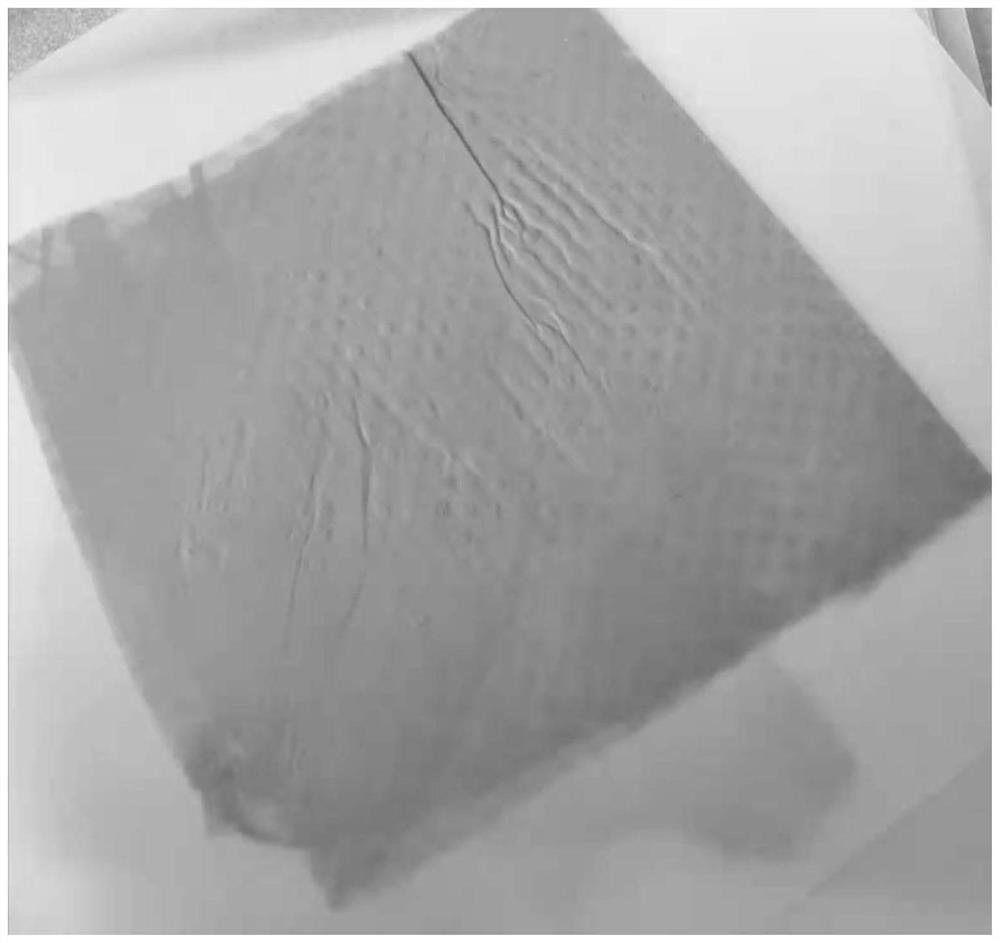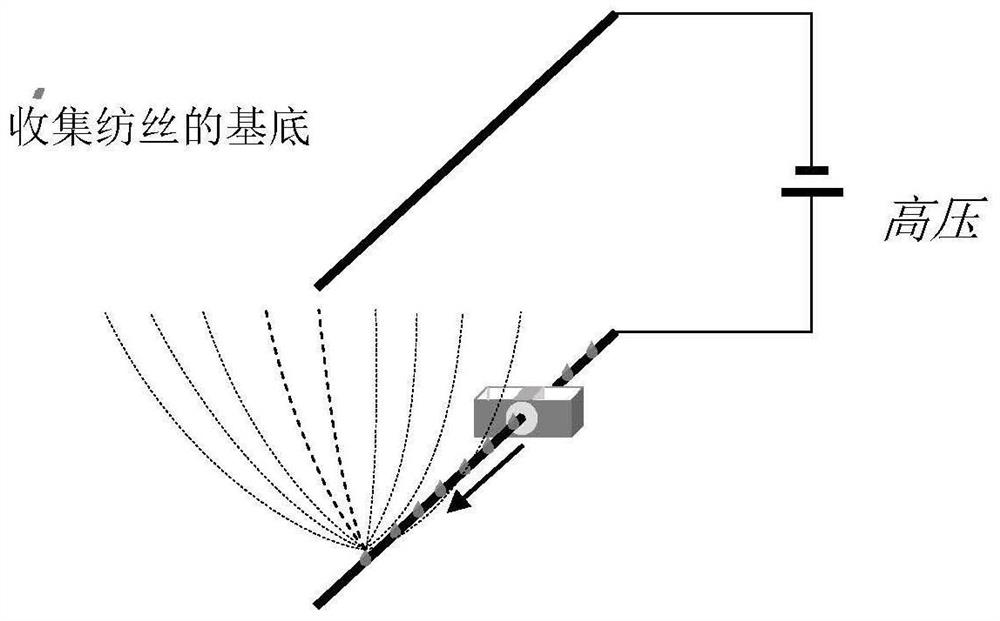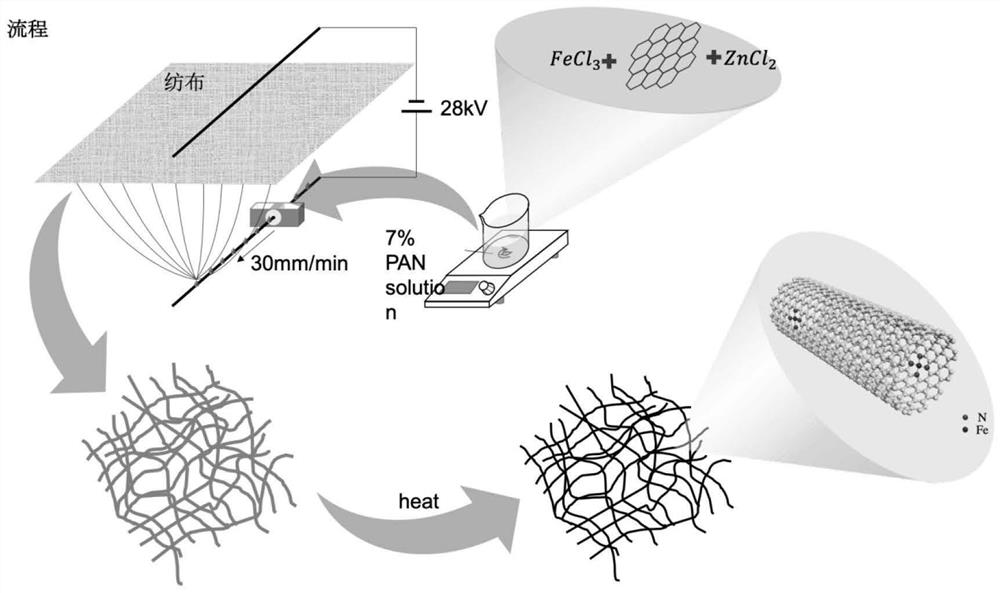Method for preparing metal-nitrogen molecule/graphene/carbon nanofiber composite material through electrostatic spinning and application of metal-nitrogen molecule/graphene/carbon nanofiber composite material
A technology of carbon nanofibers and electrospinning, applied in chemical instruments and methods, catalyst activation/preparation, electrodes, etc., can solve problems such as increased cost, unevenness, weak adhesion of coated catalysts, etc., and achieve enhanced stability , the effect of strong flexibility
- Summary
- Abstract
- Description
- Claims
- Application Information
AI Technical Summary
Problems solved by technology
Method used
Image
Examples
Embodiment 1
[0058] Example 1: Preparation of metal-nitrogen molecule\polyacrylonitrile composite nanofiber membrane material
[0059] 1. Add 0.5g of heme iron into 20g of N-N dimethylformamide solvent, stir at room temperature to make it evenly distributed, and obtain a tan solution, then add 1.28g of polyacrylonitrile (accounting for the mass of N-N dimethylformamide 6%), stirred vigorously at room temperature for 12 hours to obtain a viscous spinning solution.
[0060] 2. Put the precursor solution into the container box containing the spinning solution, set the distance between the wires to 15cm, the scanning speed of the container box to 30mm / min, the ambient humidity to about 30% RH, and the applied voltage to 24kV. spinning to obtain Fe-N / polyacrylonitrile composite nanofiber membrane material.
[0061]3. Place the obtained Fe-N / polyacrylonitrile nanofiber membrane material in a vacuum oven and dry it at 80°C for 12 hours to remove the residual DMF organic solvent. The optical phot...
Embodiment 2
[0062] Embodiment 2: catalytic reaction
[0063] 1. Pretreat the Fe-N / polyacrylonitrile nanofiber membrane material prepared in Example 1 under an air atmosphere. The pretreatment temperature is 280°C, the pretreatment time is 2h, and the heating rate is 5°C / min. After the temperature was lowered to room temperature, the pretreated Fe-N / polyacrylonitrile nanofiber membrane was obtained. The tensile strength of the composite film is 35MPa according to the film strength measurement by a universal mechanical instrument.
[0064] 2. Place the pretreated Fe-N / polyacrylonitrile nanofiber membrane in an ammonia atmosphere for carbonization treatment. The carbonization temperature is 1050°C, the carbonization time is 1h, and the heating rate is 5°C / min. Fe -N / carbon nanofiber membrane as ORR, CO 2 RR catalyst. The tensile strength of the catalyst membrane after heat treatment was 21 MPa.
[0065] 3. ORR catalytic performance test
[0066] A circular die with a diameter of 5 mm wa...
Embodiment 3
[0070] Embodiment 3: catalytic reaction
[0071] 1. Pretreat the Fe-N / polyacrylonitrile nanofiber membrane material prepared in Example 1 under an air atmosphere. The pretreatment temperature is 280°C, the pretreatment time is 2h, and the heating rate is 5°C / min. After the temperature was lowered to room temperature, the pretreated Fe-N / polyacrylonitrile nanofiber membrane was obtained.
[0072] 2. Place the pretreated Fe-N / polyacrylonitrile nanofiber membrane under an argon atmosphere for carbonization treatment. The carbonization temperature is 1050°C, the carbonization time is 1h, and the heating rate is 5°C / min. Fe -N / carbon nanofiber membrane as ORR, CO 2 RR catalyst. The difference between this and Example 2 is that the carbonization treatment atmosphere is different.
[0073] 3. ORR catalytic performance test
[0074] A circular die with a diameter of 5 mm was used to press a disc with a diameter of 5 mm from the Fe-N / carbon nanofiber membrane as a catalyst for the ...
PUM
| Property | Measurement | Unit |
|---|---|---|
| tensile strength | aaaaa | aaaaa |
| tensile strength | aaaaa | aaaaa |
| specific surface area | aaaaa | aaaaa |
Abstract
Description
Claims
Application Information
 Login to View More
Login to View More - R&D
- Intellectual Property
- Life Sciences
- Materials
- Tech Scout
- Unparalleled Data Quality
- Higher Quality Content
- 60% Fewer Hallucinations
Browse by: Latest US Patents, China's latest patents, Technical Efficacy Thesaurus, Application Domain, Technology Topic, Popular Technical Reports.
© 2025 PatSnap. All rights reserved.Legal|Privacy policy|Modern Slavery Act Transparency Statement|Sitemap|About US| Contact US: help@patsnap.com



